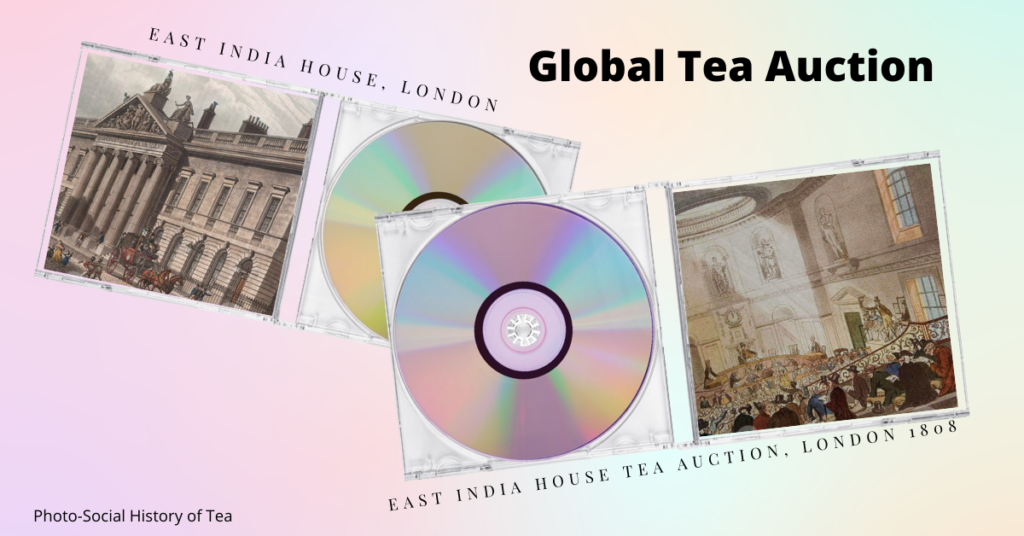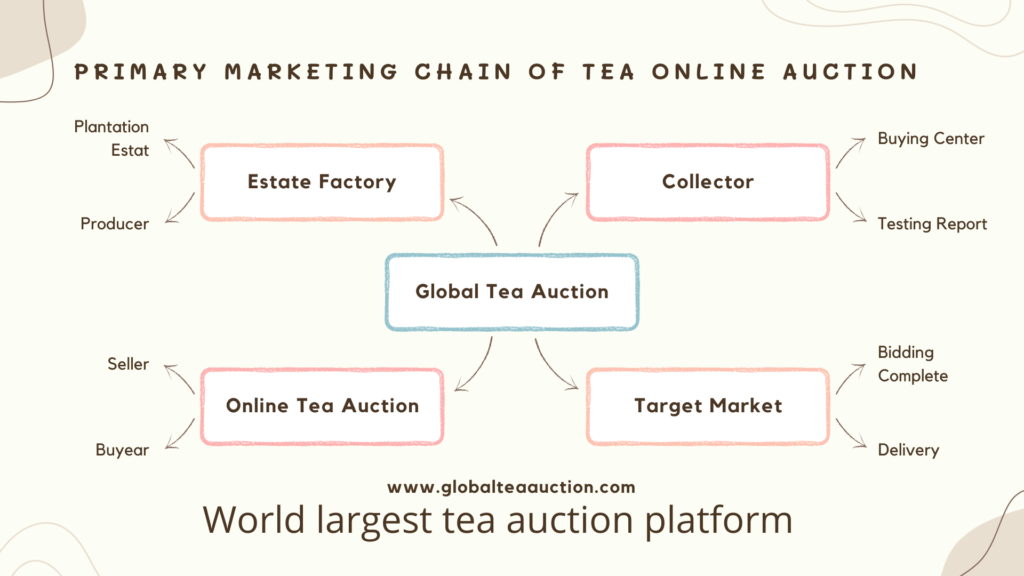Tea auctions have a long history dating back to the 17th century. To this day it is considered the most preferred method of tea disposal among tea growers, which is still going on. An auction is usually a process of offering goods or services for a bid, taking a bid, and then buying and selling the item by selling the item to the winning bidder.
History of the first tea auction
The few auctions held before the 17th century were sporadic and rare.
In the 17th century, the British East India Company was one of the most powerful commercial enterprises in the world and also played an important role in the tea business. Britain experienced its first auction sale of antique books and patterns; Later auctions were arranged for other products. The world’s first tea auction was organized by the East India Company of the United Kingdom. At that time, the tea auction meant an organization to transfer tea from China to the Western world (Europe) because tea consumption was high in that part. The entire exclusive East India Company enjoyed this marketing system. In 1836, an order was passed that every tea book should be auctioned at the East India House. The East India Company had sufficient power to carry out orders. At that time tea was sold by candlelight. A candle was lit at the beginning of the sale; One can bid for a certain lot until the candle burns one inch. Moving away from the normal process of trade, this order has affected everyone involved in tea marketing. Subsequently, due to public pressure, the authorities felt the urgent need for a real auction system where tea would be sold with equal opportunity for all buyers.

The practice of selling ‘by candlelight’ was replaced by a more practical method in the mid-nineteenth century. As a result, the first formal and organized auction center for tea with every special feature was established on January 10, 1837, in Mincing Lane, London. At that time the tea chests were transferred to the company’s warehouse and samples were given to the tea tasters for grading and evaluation, who would determine a possible price for the tea flavors. Auctions were held between tea brokers, their clients, and tea traders in London. The exclusive nature of the company has not changed even after the change of the former unorganized tea business at the auction center. The marketing system has been highly organized since the first shipment of Assam tea was sent to the London auction on January 10, 1839, which was recognized as the first auction sale of Indian tea in the international market.
Until world tea production was regulated by the British, auction transactions through the London auction were the most acceptable. Before World War II (1939-1945) more than sixty percent of the world’s tea, which was under British control, was marketed in London. But with the development of the tea industry, producers of different countries found fault with this system. Even after the war ended in 1945, the London Auction Center did not reopen until 1951. This has resulted in an additional supply of tea to various producing countries. As an alternative to the London auction, the auction resumed in Calcutta (then Calcutta) in 1946 and in Colombo in 1947 to settle the surplus. This was not enough to market all the tea produced in the world and there was a need to set up new auction centers in different producing countries. As a result, new auction centers were set up (India Tea Auction Centers in Cochin, Amritsar, Coonoor, Guwahati, Siliguri, Jalpaiguri, Coimbatore, Kenya Tea Auction Center, Mombasa, Bangladesh Tea Auction Center, Chittagong, Cameroon Tea Auction Center, Limbe, and Indonesia). LondonThe amount sent to the auction caused a sharp decline.
Gradually, the London Tea Auction Center lost its former priority. By 1930, Indian tea occupied about 60 percent of the total tea offered at the London auction. But after India’s independence (1947), indigenous producers preferred to sell their tea at domestic auctions, avoiding the time and cost of sending them to London auctions. Other producing countries, such as Sri Lanka and Kenya, have also stopped sending tea to the London auction. When the tea auction resumed at the London auction in 1951, sales fell from 200 kg to about 50 mkg…The trend, which began in the early 1980s, only reached a critical level of 16 mkg in 1996, until the world’s first tea auction center, the London Tea Auction, closed on June 29, 1998.
After the closure of the London Tea Auction, the tea-producing countries continued to auction tea with skills from their respective countries. At present their country’s tea production is meeting the demand of their own country and exporting to foreign countries.
The importance of current tea auctions and online tea auctions
Already got all the information starting from the first history of the tea auction. Now the tea auction activities on the internet have gone much further. Tea auctions are now being conducted digitally, starting with candles. Tea-producing countries are conducting online tea auctions to capture their tea expansion market and get better prices. It is easily conducted tea auctions through various online tea auction platforms including online tea auction platforms in the respective countries. From where the tea association, tea board, tea brokers, and tea buyers are benefiting. They are able to sell their produced tea very quickly and on the other hand, they are getting a lot of buyers.
How to work Global Tea Auctions
Conducting an auction of tea produced in all countries using the Internet-based online tea auction system “Global Tea Auction”. Through them, you can conduct any tea auction activities. Tea buyers will start bidding for your tea as soon as you register as a Vendor (Tea Broker) and upload the full description of your tea along with a description of the possible price of the tea. Which will not take long to settle your tea. Buyers from any country in the world can participate in the auction from their country. If the tea is disposed of, the Global Tea Auction will deduct the price of 1 kg of tea from the buyer. Next, you will send your tea to your tea buyer. Where you need to inform the buyer including tax and delivery charges. Global Tea Auction manages tea auctions in a very simple way, besides all the information is available to the Tea Board. In addition, the Global Tea Auction has information on all tea buyers in the world and they are working to increase the number of new buyers.

Historical Data andTea Auction centers of the world
| Bangladesh | The first auction was held in Chittagong | 16th July 1949 |
| London | 16th April 1951 | |
| East Africa | The first auction was held in Nairobi | 7th November 1956 |
| Mombasa | 14th July 1969 | |
| Limbe | 12th December 1970 | |
| First Kenyan sold in London | 18th January 1928 | |
| India | The first auction was held in Calcutta | 27th December 1861 |
| Cochin | 4th April 1947 | |
| Coonoor | 23rd March 1964 | |
| Amritsar | 30th April 1964 | |
| Gauhati | 25th September 1970 | |
| Siliguri | inaugurated on 29th October 1976 | |
| Coimbatore | 3rd January 1981 | |
| The first auction was held in London | 10th January 1837 | |
| Sri Lanka | First auction held in Colombo | 30th July 1883 |
| London | 28th October 1878 |
You have already read the history of tea auctions. The tea industry is known as one of the world’s leading industries. If you are involved in the tea business, you must understand its dignity. And for those who want to get involved in the tea business in a new way, this article will give a lot. You can buy tea from here in any country of the world through an auction. Global Tea Auction operates a system that makes it easier for all sections of the tea industry to operate. With online tea auctions you can buy cheap tea from any country in the world, on the other hand, you will save a lot of time. Our platform includes insights from all countries involved in the tea industry.
Thank you…
